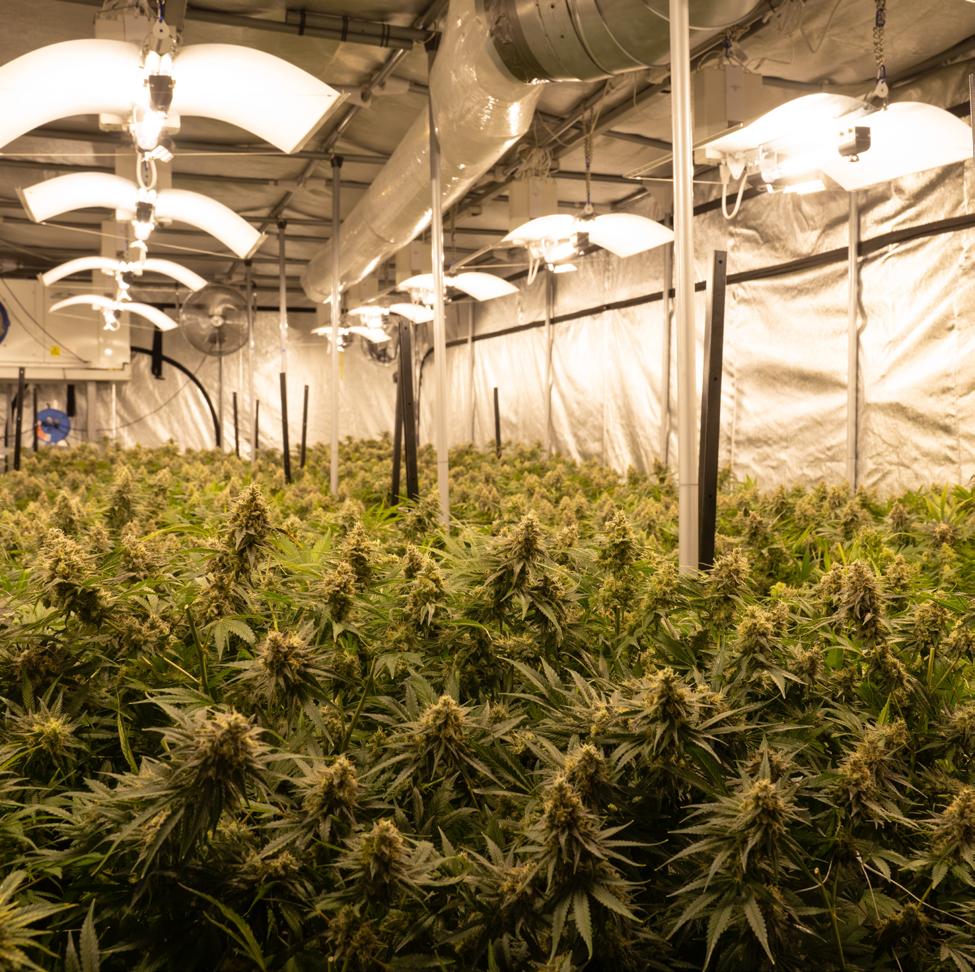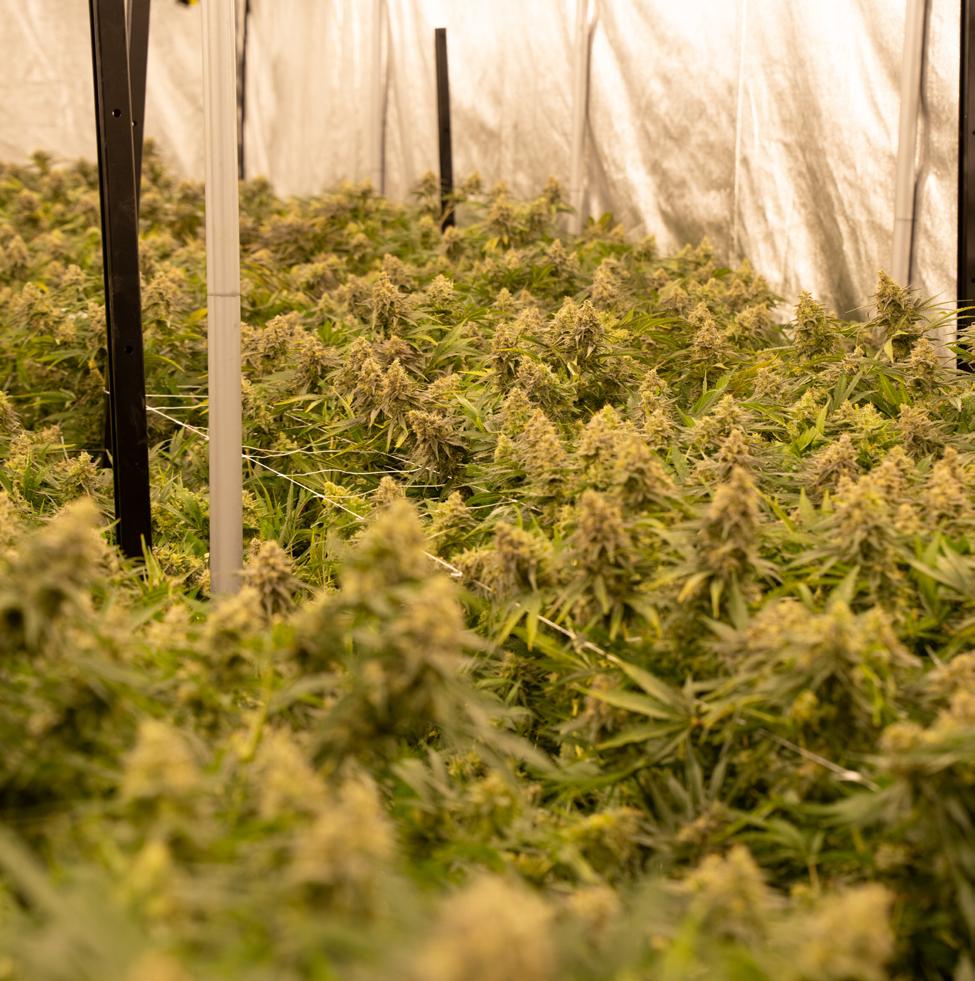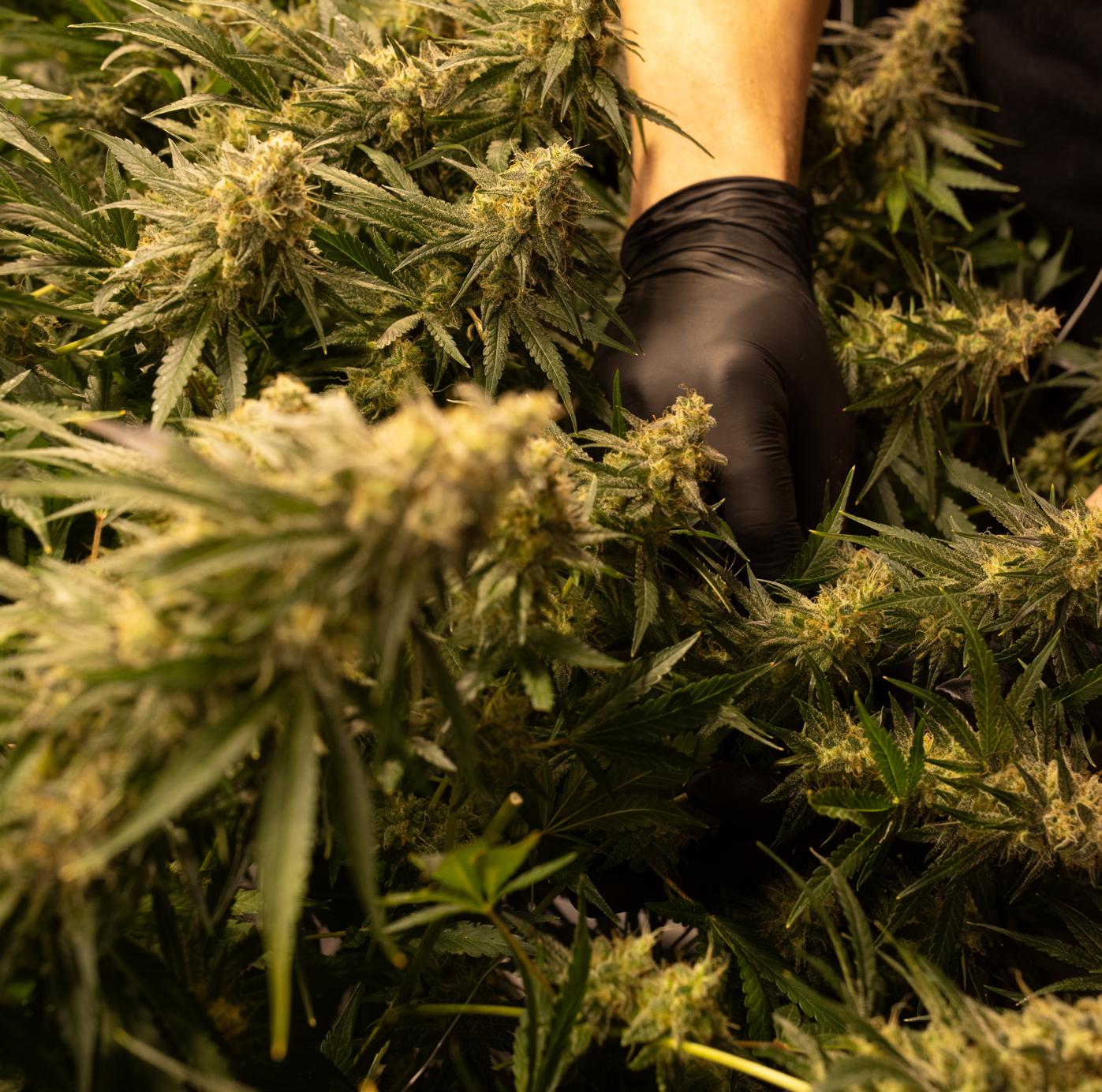
9 minute read
International Trade an US goals in Cannabusiness
TEXT PATRICK ATAGI
Artikel auf Deutsch: www.hanf-magazin.com/pa12
Advertisement
In 1943, American psychologist Abraham Maslow wrote in the peer-reviewed journal Psychological Review a paper titled “A Theory of Human Motivation,” in which he modeled what’s become known as Maslow’s Hierarchy of Needs. In his paper, Maslow hypothesized that needs are based on a pyramid that reflects society's needs. At the base of that pyramid are the absolute necessities that humans must have to survive. Those necessities are food, clothing, shelter, and medicine.
When you consider all of the remarkable things that hemp can do, you’ll see that hemp can be one of those necessities.
For instance, hemp can be food for human consumption and even for animals. In the U.K and Russia, American pizza conglomerate Papa John’s is now offering bread sticks topped with hemp seeds to its customers. In the U.S., many studies are conducting the efficacy of using hemp as an ingredient in animal feed. They’re also conducting similar studies in Thailand on chickens, and in the U.K., a group just announced this summer that they’re conducting animal feed trails by feeding industrial hemp to salmon. In the United States, last month the National Industrial Hemp Council (NIHC) and the Association of American Feed Control Officials (AAFCO) hosted a webinar on hemp as animal feed. The webinar drew over 7000 active participants – for a webinar. This is evidence there is huge interest in hemp as an ingredient in animal feed. Hemp can also be clothing.
In the U.S., major retailers such as Levi-Strauss, Patagonia, and even Nike are making clothing from hemp-derived fibers. We also know that hemp-derived fibers can be used for building materials, including hemp create, which creates a fire-proof, non-toxic, and highly insulative material on the outside, while the softer hemp fibers can be used for insulation. Some builders in Ukraine are currently using hemp to rebuild parts of the country ravaged by the country’s ongoing war with Russia.

Then we get to the medicinal properties of hemp. Since the times of the ancient Chinese, hemp oils have been used for their medicinal purposes. Today in the U.S. and throughout the rest of the world, many people looking to benefit medically from hemp’s many cannabinoids, most specifically cannabidiol (CBD).
But it’s not just the diverse set of uses for why people should be excited by hemp.

It’s what hemp can do. When hemp is planted in the ground, it can remediate and clean toxic chemicals from the soil while capturing carbon from the atmosphere. In fact, for every hectare of hemp planted, 1.63 hectares of trees must be planted to reach the same effect for carbon reduction making hemp a more efficient tool than planting trees in the rain forest. When fiber hemp is used for building materials, automobile manufacturing, or any of the various other industrial uses of the plant, the carbon-neutral effect is multiplied.
There are many uses for the hemp plant it seems the opportunities are endless. And while the European hemp sector is more established, the U.S. hemp industry is catching up.
Growers, producers, manufacturers, and everyone else in the hemp supply chain remains bullish on hemp’s ability to be a carbon-neutral and climatesmart commodity. However, the challenge for U.S. growers and regulators remains not what to do with the plant but the regulatory scheme around it.
The NIHC is supported by the United States Department of Agriculture (USDA) through its participation in the Market Access Program (MAP). The goal is simple, help create a global market for U.S. industrial hemp. However, that task is fraught with challenges internationally and throughout the federal system, where U.S. states are imposing their cannabis regulations, which oftentimes confuse hemp with its higher THC cousin marijuana. This type of roadblock is an unfortunate consequence of federal and state lawmakers not understanding the full potential of hemp after years of cannabis prohibition.
But it’s not just American regulators who provide roadblocks, it’s the international governing bodies as well. Be it organizations like the European Union or regulators in individual countries, our participation in the Market Access Program seeks a more well-rounded understanding of cannabis and the potential it can play in creating jobs and contributing to a cleaner environment.
Take, for instance, Isaiah Miller, the proprietor of Forest Hill Specialties in Leola, Pennsylvania. Isaiah is an Amish farmer who has been growing organic produce on the land his family has owned for decades. Recently, Forest Hill began growing hemp for cannabidiol (CBD). But besides growing organic produce, Forest Hill also manufactures tools, including a shovel made from hemp bioplastics.
Yes, some of Isaiah’s products contain THC (at the minimal and non-intoxicating level of .3 percent as called for by the U.S. statutes). But why do THC levels matter for other products he produces, like his Hemp Scoopy Shovel which has much more utility than a tincture of CBD? Because let’s face it, no one is going to try to consume a shovel – much less become intoxicated from it. But it begs the question – is Isaiah selling shovels, or is he selling cannabis?
Furthermore, Isaiah is a businessman, and like all successful businesspeople, he wants to expand his customer base. If he wanted to sell his Hemp Scoopy Shovels globally, what kind of roadblocks would he run into? Would countries importing his shovels consider his products cannabis? Or would they just be shovels? In Europe, there might be several countries where he is free to do business as he chooses because it’s just a shovel. Would his shovels made from hemp bioplastics be welcomed in Russia? Or what about other parts of the world, such as the Middle East? Would Isaiah dare try to import a cannabis-based product to a country like Saudi Arabia?


One potential hurdle for United States hemp in the global economy is that hemp operators and national organizations like NIHC are pushing to raise change the legal definition of hemp from .03 percent THC to one percent total THC. This makes economic sense, and we believe addresses potential safety concerns from minor cannabinoids like delta-8 THC products that are being sold on retail shelves and online. However, this potentially puts U.S. hemp in direct contradiction to both the European Union’s policy on Common Agriculture Practices and the United Nation’s Convention on Narcotics both of which are currently harmonized with the current U.S. policy of .3 percent delta-9 THC.
In the U.S., if the crop was over the .3 percent limit, it's destroyed per the individual state’s approved regulations. While that still happens, it’s happening less and less frequently.
Raising the limit of THC to one percent is especially important for hemp fiber being grown in various parts of the U.S. Midwest and throughout the country’s Southeast region. The hot and humid climate with plenty of rain makes growing fiber hemp potentially a very profitable commodity for U.S. farmers. But as U.S. research has shown, the more favorable the climate for hemp fiber, the taller and stronger the plants grow. With taller and stronger plants comes a greater concentration of THC.
But the U.S. is leading the world’s research in seed genetics. There are numerous companies, developing these genetics and using science to manage the THC content in different hemp varieties. This is an especially positive development being watched closely by American hemp fiber producers. Planting hemp fiber can be an extremely difficult proposition with little room for error for farmers more familiar with planting other rotational crops.
Working together to create stronger genetics and create a regulatory definition of one percent gives more wiggle room for farmers and can be used as a tool to grow more hemp and the U.S. industry at large. With more hemp being produced, that’s more industrial hemp-based products that can be manufactured and sold while contributing to the overall global hemp economy.
We want more hemp fiber grown in the United States because of the variety of uses in textiles, food, feed, building materials, and automobile manufacturing. All of this would be created in a carbonneutral industry that if global regulators are serious about meeting our climate change obligations, would understand the full value of the industrial hemp industry.
And we’re making progress – together. Earlier this year, representatives from the hemp trade associations in Europe, Asia, South America, and Australia along with our partners in North America the Canadian Hemp Trade Alliance formed the Federation of International Trade Organizations (FIHO). We’ve since grown and are working with countries in Africa making it truly a global organization.
My former mentor at the United States Department of Agriculture (USDA) always said working together works. The goal of FIHO is to bring together the global hemp industry and work together to increase the growth of the global hemp economy.
Industrial hemp isn’t just something that you smoke. Industrial hemp is something you wear, something you live in, something you eat, and something you drive. And it has the potential to change the narrative of the global climate change debate.
American philosopher Henry David Thoreau once said, “You must live in the present, launch yourself on every wave, find your eternity in each moment.”
We’re all riding that wave. The global efforts of educating, communicating, and the important research of our industry today have the potential to leave our mark and create opportunities across the global economy not just for today, but for future generations.










